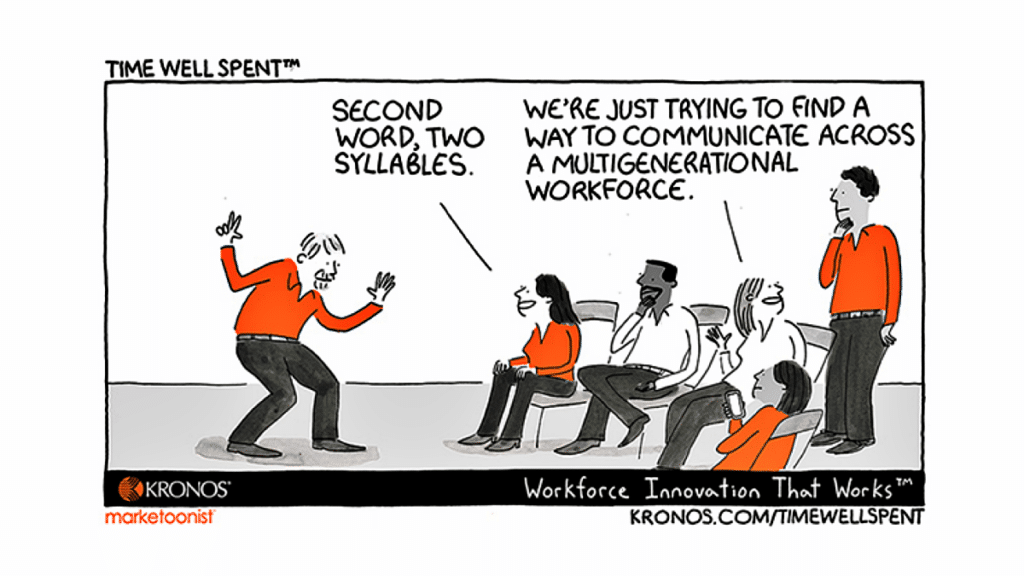Workplace Language Is Important

(Editor’s Note: Today’s article is brought to you by our friends at Kronos, a leading provider of workforce management and human capital management cloud solutions. Check out this article on Thrive Global where Kronos CEO Aron Ain talks about how to “Stay Humble to Create a Fantastic Work Culture.” Enjoy the article.)
I was recently facilitating the Society for Human Resource Management (SHRM) seminar on “Leading Workplace Investigations”. We were discussing a case study where an employee expressed uncomfortableness when her manager came up behind her at the copier and said “Boo”.
Half of the room thought “Boo” in terms of Halloween and scaring someone. The other half though of “Boo” in Urban Dictionary terms as someone you love or care about. Obviously, they are not remotely similar definitions and we all got a good laugh. It made the case study quite interesting.
That’s why I laughed when I saw this Time Well Spent from our friends at Kronos. Managers and employees can sometimes feel like they’re in the scene from “The Princess Bride” when Inigo Montoya says, “You keep using that word. I do not think it means what you think it means.” Just like organizational culture, organizations have their own unique workplace language and it’s important for employees to understand it.
Develop a company glossary and share it during orientation. I discovered when I worked for an airline that the transportation industry is full of specific jargon – airport codes, airline abbreviations, unique metrics, etc. We created a dictionary for new employees, so they understood what those acronyms and abbreviations meant. It’s hard for employees to do their job if they can’t decode the message.
Learn new business terminology. I love all the articles that come out when Merriam-Webster adds new words to the dictionary. Their latest additions include vacay and solopreneur. From a business perspective, they’ve also added pain point (a persistent problem) and haircut (a reduction in the value of an asset). At one time retweet was a new term. Same with freemium. It’s important to understand those new terms as part of workplace language so we can stay current with business trends.
Make it safe to botch up a word or phrase. I just listened to an episode of Adam Grant’s podcast WorkLife. This episode focused on The Daily Show’s secret to creativity. You should check it out when you have a moment. At one point, the show writers are talking about how they laugh at themselves when they write or say the wrong word during the development process. The mistake ends up becoming a bonding moment instead of a grammar lesson.
I’m certainly not saying that it’s acceptable to have sloppy work full of typos and grammatical mistakes. But let’s face it, typos happen. Grammar gets messed up. We pronounce words wrong. And we sometimes use words in the wrong context. Not intentionally. But because we’re learning.
Organizations have an opportunity to help employees get their workplace language right. We can give employees workplace glossaries and encourage them to read/watch/listen to business publications to learn new words. Not only will it help with employee development, but it can help employees do their jobs better. Because they’ll understand the workplace language.
15